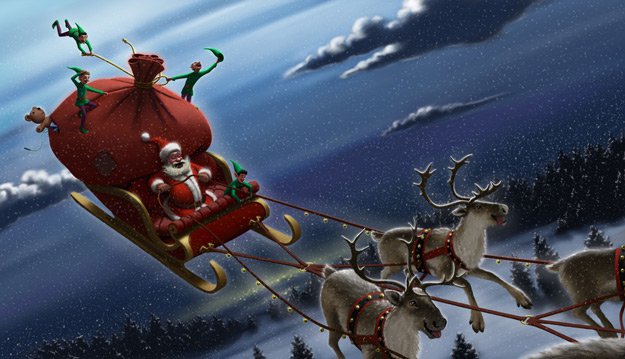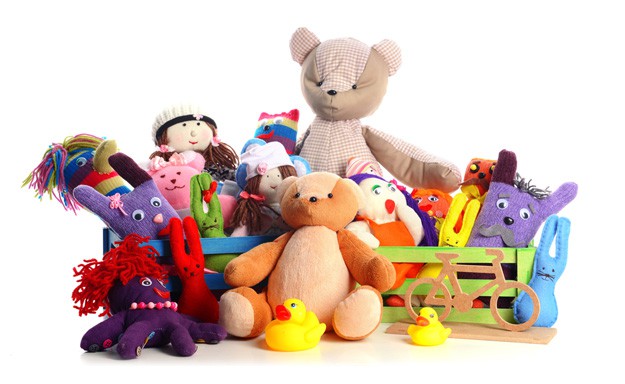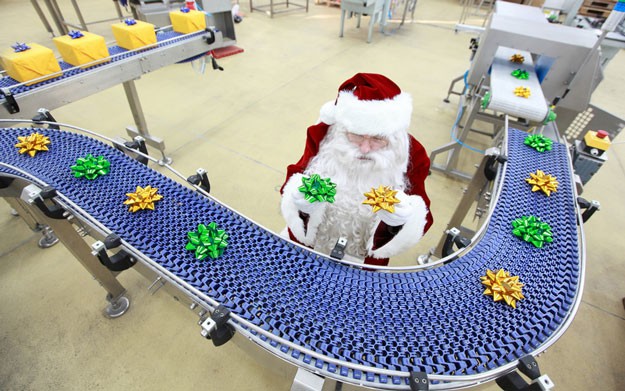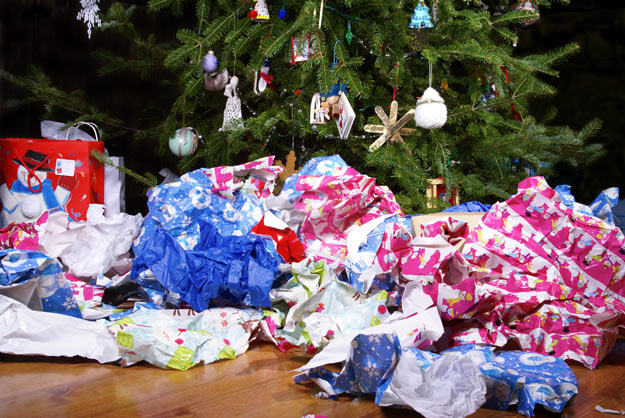Ever wondered what Santa's carbon footprint is? Since everyone is going green, it only makes sense that Santa goes green as well, right?

What is Santa's Carbon Footprint?
I just love the idea that there is someone out there every Christmas eve who goes around the world to give nice children gifts. What fun would that be if it was really true. It would truly be, a magical Christmas. But let's say that Santa isn't magical at all. Let's pretend that he is real and all the things that he do from manufacturing toys, making the delivery to leaving coal to naughty kids happen. Wouldn't he be leaving a ton of carbon footprint? Let's take a look at this really cool infographic.
via Ethical Ocean – Eco-friendly products. fair trade and vegan shopping.
What is Santa's Carbon Footprint?
Santa may be jolly, but he is certainly not green. Over his 122 million-mile trip around the world, Santa will release 69.7 million metric tons of carbon emissions. We take a look at where these emissions are coming from and what can be done to make this Christmas joyful for children and the environment.
Christmas Culprits

Let's take a closer look at the sources that are releasing all these extra metric tons of carbon dioxide into the air.
Reindeer
The tundra reindeer, found in the Arctic tundra of Eurasia, typically grows to a height of 7 feet and a weight of 410 pounds. Very few are seen with red noses.
Sleigh
Santa's traditional red Scandinavian sleigh carries a payload of nearly 321,000 tons.
Santa
Sometimes known as Father Christmas or St. Nick, Santa Claus weighs in at 300 pounds—age unknown.
The Dirty Truth
In just one night, Santa releases almost 69.4 million metric tons of carbon emissions. That is roughly the amount of annual carbon emissions produced by the country Qatar.
Carbon Emissions
- Reindeer – 53,667 metric tons

A team of seven-foot tall Tundra reindeer will emit 40,668 metric tons equivalent of carbon dioxide during their 122 million mile trip. Much like cattle, reindeer produce methane through normal animal digestive functions, which is 21 times as potent a greenhouse gas as carbon dioxide.
- Lumps of Coal – 231,702 metric tons

The typical lump of coal found in a naughty child's stocking weighs approximately six ounces. If 1/5 of all children in the world are on the naughty list, 75,000 tons of coal will be left in stockings. 37,111 metric tons equivalent carbon dioxide was released in the mining of that coal in the form of methane gas. Another 194,591 metric tons will be emitted if they choose to burn the coal Christmas morning.
- Toys – 68.1 million metric tons

Toys are, by far, the top contributor to Santa's carbon footprint. From the initial production and assembly, to the packaging and eventual disposal, toys for good children will release 68.1 million metric tons of CO2.
- Milks & Cookies – 8.860 metric tons

The Christmas Eve tradition of leaving out milk and cookies come at a cost to the environment. It takes 900 and 750 grams worth of carbon emissions per kilogram of food to produce milk and cookies, respectively.
- Factory Up North – 983,000 metric tons

The size of Santa's workshop also adds to his carbon footprint. The workshop is comparable in size to large factories owned by Nike. Thus the workshop would emit 983,000 metric tons of CO2.
- Wrapping Paper – 284,493 metric tons

Different types of weights of wrapping paper will change the amount of carbon emissions produced. But, in general, if every good child receives one wrapped present from Santa on Christmas, it will produce 284,493 metric tons.
For a total of: 69.7 million metric tons!
Reducing Carbon Footprint

Now that we are aware of exactly what increases Santa's carbon footprint, there are steps we can take to ensure a more environmentally friendly holiday.
Sleigh Upgrade
Proposed by GE, a redesigned sleigh could help create less ice buildup and wind resistance, allowing Santa to travel over long distances more quickly, using fewer resources. Santa could also use the new sodium batteries that are used in other forms of hybrid locomotion.
Green Wrapping
Instead of reaching for commercial wrapping paper, which is loaded with toxic dyes, Santa could use recycled paper, natural fiber fabrics, or sustainable, biodegradable paper.
Local Milk and Cookies
When you set out that cup of milk and plate of cookies for St. Nick, choose items that were produced locally. Buying local product cuts down on the largest CO2 emitter, transportation and refrigeration. An even better choice would be soy milk since soy beans absorb rather than emit CO2.
Don't Leave Coal
Instead of giving lumps of coal to naughty children, give them an alternative form of energy generation, such as a tiny wind turbine or pinwheel, or a few locally grown lemons.
Energy-Efficient Factory
Though the sleigh might run on Christmas cheer, the factory up North certainly does not. By switching to solar power, Santa and the elves can take advantage of the periods of 24-hour sunlight at the North Pole.
Recycled Toys
Changing the types of toys delivered on Christmas will have the largest impact on reducing the amount of carbon emissions. Santa should choose to make eco-friendly toys made from 100 percent recycled material. In the case of music and video games, opt for the digital format instead of a physical copy.
Wasn't that interesting? Santa should really consider going green, that is really a looot of carbon output for one night. What do you think? Share it with us in the comments section below! 🙂
If you like this, you'll love Everything You Need to Know About the History of Santa's Reindeer!



[…] What is Santa’s Carbon Footprint? […]